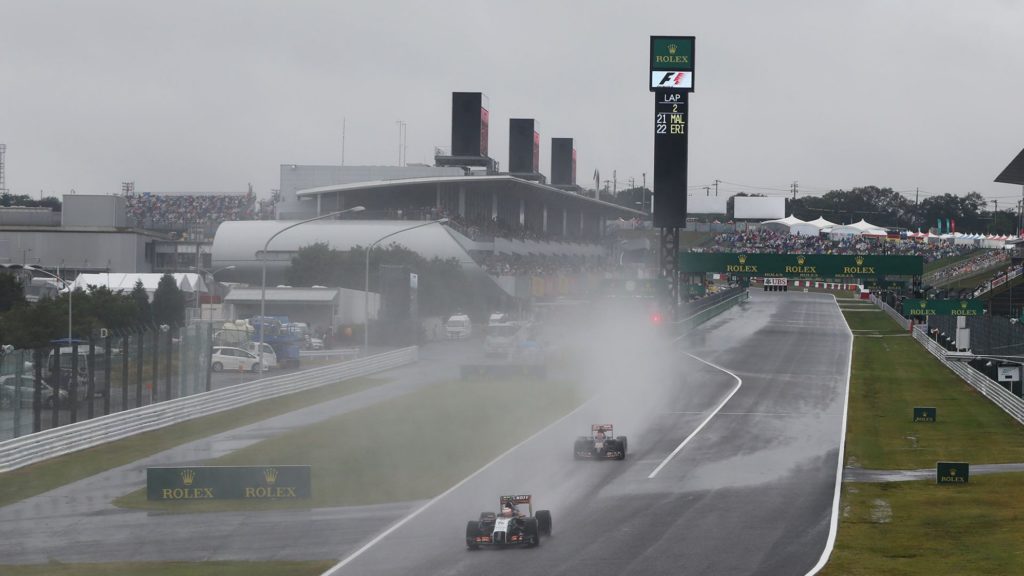The 2019 edition of the Formula 1 Japanese Grand Prix is right around the corner.
And for the first time since 2014, a Japanese driver will be driving an F1 car at Suzuka on his home Grand Prix weekend. As well, reigning Super Formula and Super GT champion, Naomi Yamamoto, also a Japanese, will be taking to the track for Torro Rosso on Friday.
Here is a look at six moments when Japanese talent went big in Japan in F1.

(1) The Early Adopters
Thanks to their involvements in the 1960s, Honda may have the limelight for early Japanese involvement in F1, but they were not the first Japanese outfit to make a Grand Prix appearance.
Instead, that falls to Maki and Kojima, both of which are largely forgotten privateer teams and which fielded less-than-competitive cars at Japan’s first F1 World Championships Grand Prix back in 1976.
Maki’s F1 debut was in early 1974 at the British Grand Prix but when driver Howden Ganley crashed and was badly injured during the following race in Germany, the team disappeared from the limelight, returning again one more time at their home circuit in 1976, but after a disappointing performance, they faded completely.
Kojima fared slightly better, with driver Masahiro Hasemi at the wheel finishing the 1976 Fuji race in 11th place in treacherous conditions, and seven laps behind the race winner.
The team appeared again at the following year’s race with Noritake Takahara who crashed and Kazuyoshi Hoshino who finished in 11th place. They disappeared from the sport after that.
(2) Honda’s Success
Honda, the most successful export from Japan, have several successes to their name. They won the 1965 Mexican Grand Prix and the 1967 Italian Grand Prix, as well as the 2006 Hungarian Grand prix.
The constructor did not fare as well at past editions of the Japanese Grand Prix though, with a 2006 fourth position by Jenson Button being the best performance of theirs.
(3) The rise of Aguri Suzuki
Aguri Suziki was the first Japanese driver to win the Japanese Grand Prix, doing so at the 1990 edition. Since then, 17 Japanese drivers have raced in F1 and three have stood on the podium of their home race.
(4) The entrance of Takuma Sato
Entering F1 in 2002, Takuma Sato was a rising star in the sport and the winner of the British F3 title. However in the first 12 races with the Jordon F1 team, Sato disappointed, with seven retirements, but things improved for him after that. He finished fifth in Suzuka that year.
The following season, Sato joined BAR as a test driver, finishing fourth on his team debut at the Japanese Grand Prix and third at the 2004 USA Grand Prix, his career-best result to date.
(5) The achievements of Toyota
At the beginning, constructors Toyota entered F1 with a massively ambitious, money-no-object philosophy but this failed to guarantee them success and though they came fourth in the 2005 Constructors Championship, they were never world-beaters.
Over the course of their time in F1, Toyota picked up 13 podiums, with the final one being at the 2009 Japanese Grand prix.
(6) Japan’s most recent podium finisher was Kamui Kobayashi, who made his debut for Sauber in the 2009 Brazilian Grand Prix and made a name for himself with his fight against eventual winner Jenson Button. He then scored his first points at the Abu Dhabi Grand Prix in the same season, finishing sixth.
The highlight of Kobayashi’s F1 career was at the 2012 Japanese Grand Prix where he qualified in fourth and resisted heavy pressure from Jenson Button, who had qualified third but lost position on the starting grid because of a gearbox related issue.
Kobayashi finished the Suzuka race in third, marking a then first podium for a Japanese driver in 22 years.
Unfortunately despite the result, the driver lost his Sauber seat in 2013.
Photo credit: Formula1.com

Leave a Comment